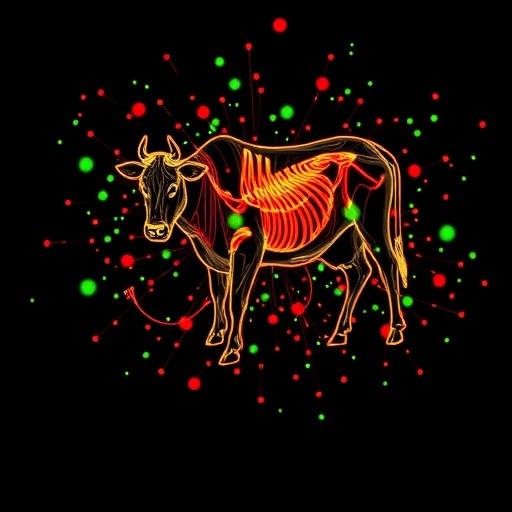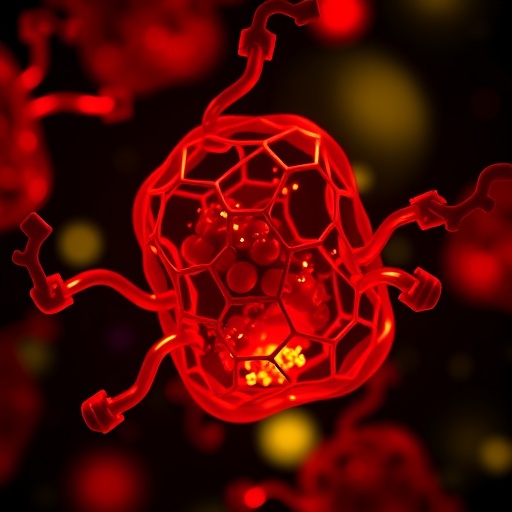
Pre-existing immunity from seasonal H1N1 flu has emerged as a crucial factor in determining the severity of H5N1 bird flu infections, according to a groundbreaking study conducted by researchers at the University of Pittsburgh School of Medicine and Emory University. Published in the journal Emerging Infectious Diseases, this research utilizes a ferret model to explore the complex interactions between prior immune responses to H1N1 and how they influence the outcomes of infections with H5N1.
The significance of this study lies in its suggestion that an individual’s past infections, particularly with the seasonal H1N1 virus, may offer a layer of protection against the more lethal H5N1 strain. The ferret model, widely recognized for mimicking human physiological responses to influenza infections, demonstrates that previous exposure to H1N1 helps modulate the immune system’s reaction to H5N1. Researchers noted that ferrets previously infected with H1N1 exhibited a reduced severity of illness and a higher survival rate compared to those that had not previously encountered the virus.
In the study, ferrets that had acquired immunity from H1N1 infection were less likely to develop severe symptoms when exposed to H5N1. The findings revealed that even though these ferrets sustained comparable lung damage to their naïve counterparts, they displayed milder overall health effects. This included reduced fevers and minimal weight loss, alongside improved behavioral responses. These observations underscore the intricate relationship between different strains of influenza and highlight the impact of prior immunity on flu-related morbidity.
One of the critical mechanisms identified in this research is that while antibodies produced against H1N1 do not neutralize H5N1 directly, they seem to enable a more efficient and regulated immune response to the latter. This suggests that although the immune response generated from seasonal vaccines may not confer direct protection against H5N1, they can still mitigate the severity of the disease. This insight has significant implications for public health, particularly in the context of pandemic risk assessment as global concerns about avian flu continue to evolve.
The implications of such findings extend beyond just the ferret model, hinting at a potential way to understand how seasonal flu vaccinations may shape human responses to severe influenza outbreaks. Dr. Valerie Le Sage, the lead author of the study, emphasized that it is imperative to consider prior immunity during evaluations of pandemic risks. This concept could ultimately influence vaccination strategies, with researchers advocating for a more nuanced approach to flu vaccines—one that accounts for the history of infections within populations.
Despite ongoing threats posed by H5N1, the World Health Organization (WHO) currently assesses the risk to the general population as low, particularly in light of the number of reported infections and fatalities. As mentioned in the research, while pre-existing immunity can lead to less severe disease, vulnerable populations—including young children, immunocompromised individuals, and those with chronic health conditions—may still face significant risks should they encounter H5N1. The findings from this study indicate a need for comprehensive vaccination strategies that protect these high-risk groups.
Additionally, the study calls attention to the fact that the ongoing H5N1 outbreak has primarily affected certain animal populations, yet the viral strain has not demonstrated a similar devastating impact on dairy cows. Conducted over an extended observation period, researchers noted that ferrets modeling flu transmission dynamics were particularly valuable in elucidating how viruses propagate among susceptible hosts. Experimental infections exposed ferrets to H5N1 under controlled conditions, and insights drawn from these observations provide essential data on viral behaviors and host interactions.
Understanding viral transmission has never been more critical, especially with ongoing concerns about zoonotic influenza viruses jumping from animals to humans. The ferret model has long served as a critical tool in influenza research due to the species’ propensity to exhibit symptoms closely mirroring those seen in humans. As the study indicates, prior exposure to other flu strains may enable more effective immune responses and thus better clinical outcomes. This lays groundwork for new hypotheses on enhancing vaccine efficacy against future outbreaks.
In conclusion, the results illustrated by this study represent a pivotal intersection of immunology, epidemiology, and public health policy. By deepening our understanding of how previous infections shape current immune responses—in this case, drawing on H1N1’s history to inform approaches toward H5N1 infections—scientists are better equipped to tackle future pandemics more effectively. The research emphasizes the importance of ongoing exploration into the complexities of viral interactions and the immune system’s intricate responses, which will be vital in formulating advanced preventive strategies as we navigate the challenges posed by emerging infectious diseases.
The call for further studies into the protective capacities of vaccines against H5N1 and the potential for pre-existing immunity to play a role in improving health outcomes in various populations remains urgent. As the scientific community continues to monitor and respond to these infectious threats, the implications of such studies underscore the interconnectedness of viral research, immune resilience, and effective public health measures in safeguarding populations from future influenza pandemics.
Subject of Research: Pre-existing immunity and its effects on H5N1 infections
Article Title: Influenza A(H5N1) Immune Response among Ferrets with Influenza A(H1N1)pdm09 Immunity
News Publication Date: 21-Feb-2025
Web References: https://wwwnc.cdc.gov/eid/article/31/3/24-1485_article
References: 10.3201/eid3103.241485
Image Credits: Not specified
Keywords: Avian influenza, Influenza viruses, Viral infections, Immunity, Infectious disease transmission, Respiratory disorders, Pandemic influenza, Flu vaccines.
Tags: Emerging Infectious Diseases journalEmory University research findingsferret model influenza researchH5N1 bird flu severityimmune system modulationinfluenza infection outcomesinfluenza virus interactionsprior immune responses to H1N1protective effects of H1N1seasonal H1N1 immunitysurvival rates in ferretsUniversity of Pittsburgh School of Medicine study





